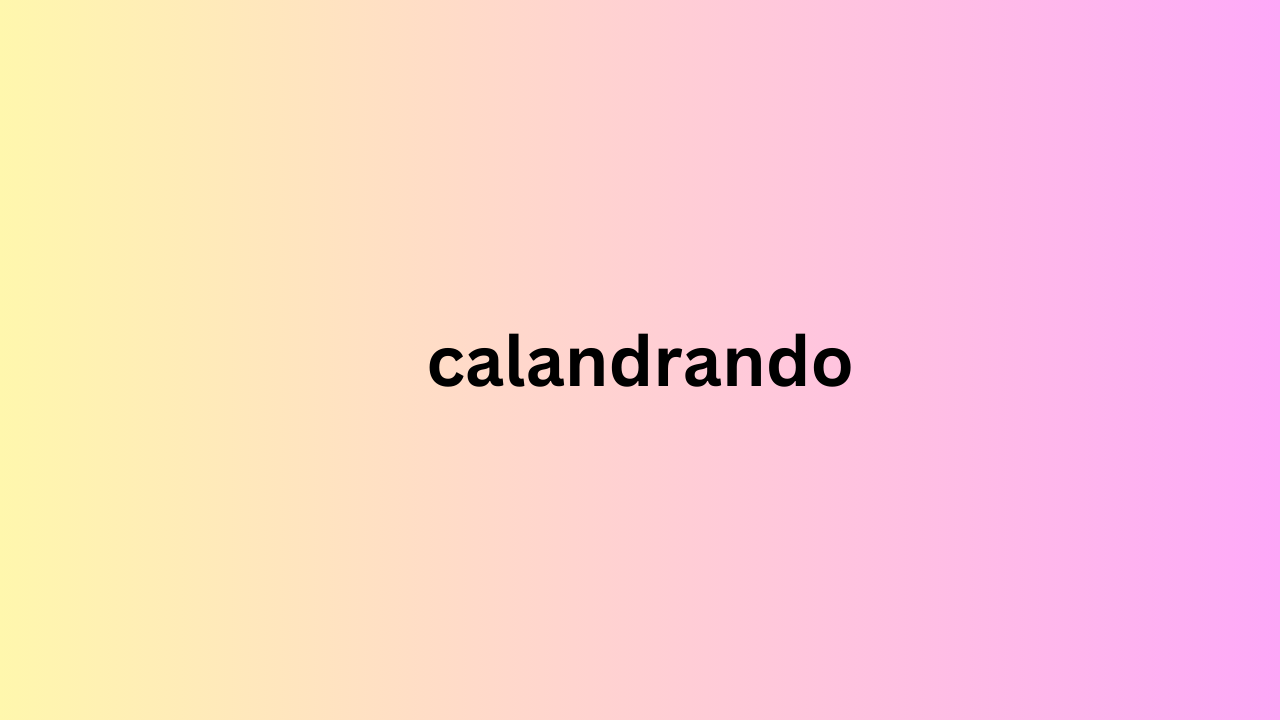Hello, readers! Today, we’re going to take a little trip into the world of words and nature, with a special focus on a term that may be new to you: “calandrando.” Don’t worry, it’s not as complicated as it sounds! This word has a fascinating history, and its connection to the calandra lark makes it even more intriguing. Let’s break it down together, step by step.
Overview of “Calandrando”
What is “Calandrando”?
“Calandrando” is a term that carries with it a sense of mystery and beauty, rooted in ancient languages. The word itself comes from the Latin “calandra”, which traces its origins back to the Ancient Greek word “κάλανδρος” (kálandros), meaning “lark.” It’s not just a word; it represents the essence of freedom, melody, and exploration. The calandra lark, known for its sweet and melodic song, plays a huge role in giving the word its significance.
Why Does It Matter?
Why should you care about “calandrando”? Well, in many ways, it’s a perfect reflection of the way language and culture evolve. “Calandrando” links us to nature, to the way humans have always admired the world around them through words. It’s a symbol of joy and discovery, and if you’re someone who enjoys exploring the deeper meanings behind language, this word is definitely one to explore.
The Etymology of “Calandrando”
The Roots of the Word
Let’s get a little nerdy here and talk about the history behind “calandrando.” As I mentioned earlier, the word comes from the Greek word “κάλανδρος” (kálandros), which referred to the calandra lark. This bird has been celebrated for centuries across various cultures, not only for its beauty but also for its unique, joyful song.
The term went through the Latin language, evolving over time, but its core meaning—related to the lark—remained intact. It’s interesting to see how the word moved across languages, picking up bits of cultural significance along the way.
The Connection to the Calandra Lark
So, why a lark? The calandra lark is a bird found in Europe, often admired for its continuous and melodious singing. The way it rises and falls through the air symbolizes freedom and joy—key qualities that we often link to exploration and adventure. The bird’s song, a constant reminder of life’s simple pleasures, connects us to nature in ways words sometimes struggle to express.
Cultural References
Usage in Literature, Art, and Music
“Calandrando” has found its way into literature, art, and even music, where the lark is often used as a symbol of beauty and freedom. In literature, the lark’s song might be used to represent hope, inspiration, or the lightness of life. Some poets have used the lark to symbolize the human spirit, always rising toward the heavens, much like the bird itself.
In art, the calandra lark might be painted as part of a beautiful landscape or captured in mid-flight, emphasizing grace and movement. In music, its song can inspire compositions that are light, airy, and filled with life.
Notable Examples and Their Meanings
Take, for example, the famous lines in Shakespeare’s Romeo and Juliet, where the lark’s song marks the morning. It’s not just a bird singing; it represents the beginning of a new day, the renewal of life. Whether it’s in a poem or a painting, the calandra lark serves as a reminder of the beauty of nature and the human connection to it.
Personal Reflections
What Does “Calandrando” Mean to Me?
For me, “calandrando” isn’t just a word. It’s a beautiful reminder to slow down and appreciate the small things—the songs of birds, the wind in the trees, and the sun rising every day. To me, it’s all about embracing the world with wonder and finding joy in the everyday moments we might otherwise overlook.
When I think of “calandrando,” I think of freedom: the freedom to explore, to discover, and to experience life with an open heart. It’s a concept I want to share with all of you.
I’d Love to Hear Your Thoughts
Now, I want to hear from you! What does “calandrando” evoke for you? Maybe you’ve heard a lark sing in the early morning, or perhaps you’ve experienced a moment where you felt like you were flying freely through life. Share your thoughts with me in the comments. Let’s chat about what this word means to each of us.
Conclusion
Wrapping It Up
So there you have it: the story behind the word “calandrando.” From its linguistic roots to its rich cultural significance, this word is more than just a way to describe a bird. It’s a reminder to connect with nature, appreciate the simple joys of life, and explore the world around us.
I hope this post has sparked something in you. Whether you’re now inspired to learn more about the calandra lark or simply feel more connected to the world, I’m glad we could explore this together.
Share Your Thoughts!
I’d love to hear how “calandrando” resonates with you. Do you have a favorite bird or natural sound that lifts your spirit? Drop a comment below or share this post with friends who might enjoy learning more about this beautiful word.
Also Read: Amazon reporting byhyperzon: Boost Sales and Optimize Business



